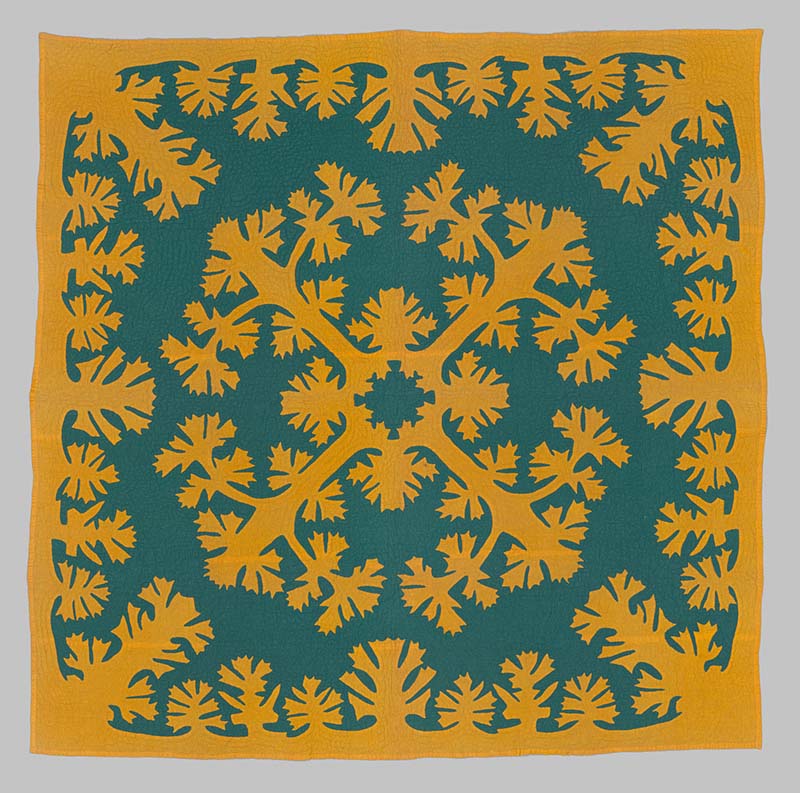
| Maker | Artist unknown |
| Date of Creation | c. 1930 |
| Location | Hawaii |
| Materials | Cotton |
| Institution | Metropolitan Museum of Art |
| Credit Line | Purchase, David Scott Parker Gift, 2017 |
| Accession Number | 2017.183 |
| Photo Credit | Metropolitan Museum of Art |
The techniques and designs of Hawaiian quilts are unique to makers of native Hawaiian heritage. Quilts started being made by Hawaiian women in the 19th century after Christian missionaries brought mainland American album quilts to the islands. Hawaiian women were particularly inspired by the cut-paper designs found on these quilts, made by folding a square piece of paper several times, and then cutting out a design. However, the Hawaiian women completely changed the scale of the design—instead of being a small cut-out that would fit on an approximately 12×12-inch quilt block, they cut out a single very large design that would serve as the overall decoration for the entire quilt. Hawaiian quilt-makers’ designs are usually inspired by their environment, especially Hawaii’s native plants. This quilt is in the Lei Mamo pattern. It may take its inspiration from two sources—either a lei of feathers from the now extinct Mamo bird, whose yellow feathers were used to create the feather capes and headdresses worn by Hawaiian royalty, or a lei of blossoms from the safflower plant, also commonly known as Mamo, perhaps because its yellow flowers have a feathery appearance.

